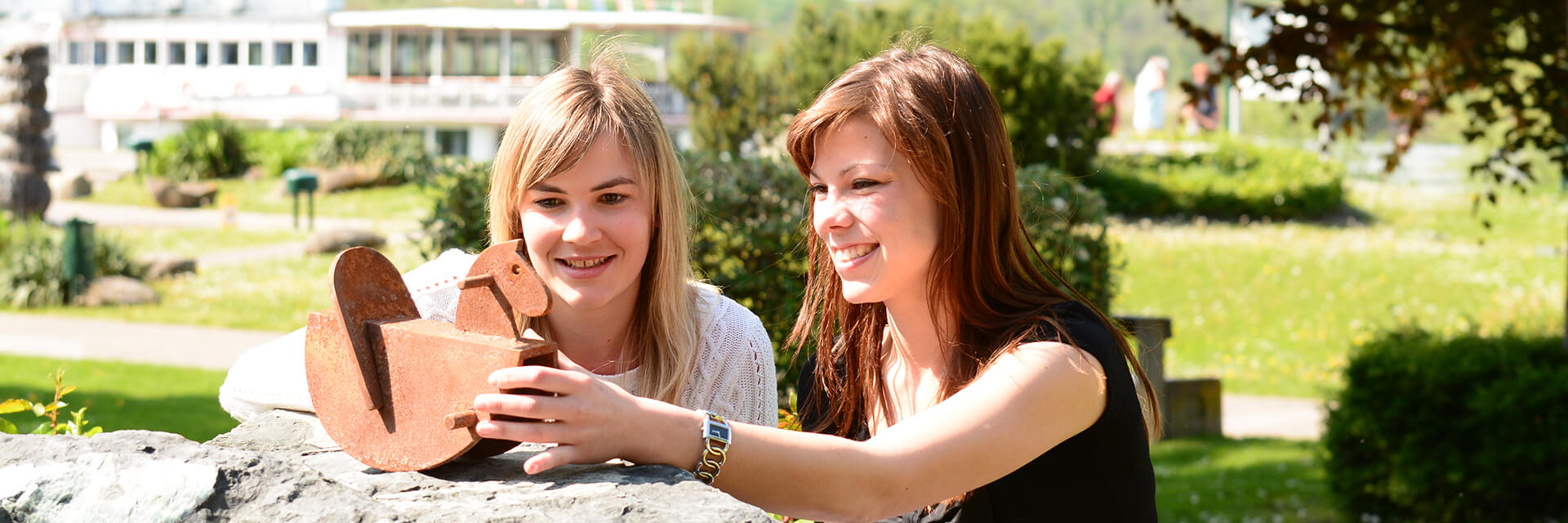IV Stadtpfarrkirche
Start of the circular special-theme trail: Tulln main station
Distance: 3.6 km
Duration: About 90 min.
Difficulty: Easy, unhindered access
Schiele Folder DE
Schiele Folder EN
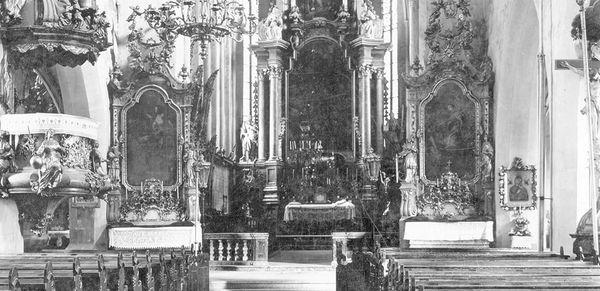
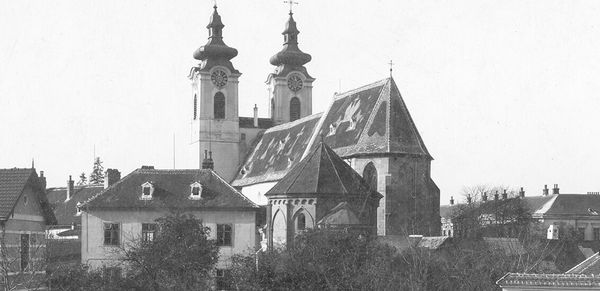
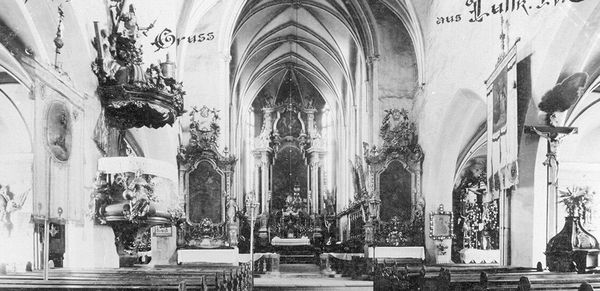
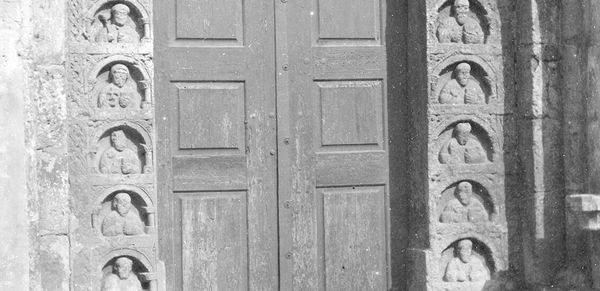
[Translate to English:]
A matter of faith or Egon and the Apostles' Portal
Here you find out what dominated the townscape of Tulln and why twelve bishops came to be known as apostles in common parlance; what upset the local priest and what Egon was up to after school.
[Translate to English:] The two imposing towers of the parish church in Tulln are nearly fifty meters high. In Egon’s childhood they dominated the townscape of Tulln. The townspeople had to tilt their heads way back if they wanted to catch a glimpse of the tops of the towers going to Sunday mass. But usually their gaze fixed on the jambs of the west portal anyway. The jambs were put there around 1200 and decorated with the stone busts of twelve bishops of Passau. These stern gentlemen were meant to safeguard the claim of Bishop Wolfger von Erla to his property. The people of Tulln chose to interpret the busts as depicting Jesus’ main disciples and named the imposing west portal the “Apostles’ Gate” instead.
![[Translate to English:] Stadtpfarrkirche St. Stephan, um 1900 [Translate to English:] Stadtpfarrkirche St. Stephan, um 1900](/fileadmin/_processed_/5/9/csm_4_Stadtpfarrkirche_img294_628px_komp.jpg_f02733cdc3.jpg)
[Translate to English:] St. Stephens's parish church, ca. 1900
[Translate to English:]
Priestly scolding.
Egon’s father was one of the leading figures in the town and a professing Roman Catholic. He was a chief official of the Franz-Josefs-Bahn, a new rail line. When decked out in his uniform with plume hat and a shiny sword at his side, he was a person sure to garner respect. For a man in his social position, it was customary for the whole family to attend Sunday mass together. For Egon and his sister, the square in front of the church was familiar terrain. The primary school children converted it into a playground as soon as school was let out. The indignant priest sent a letter of complaint to the local government, but to little avail. The moment he stepped out of the portal, the little urchins scattered in the winds. And they seemed to enjoy dallying with danger.
[Translate to English:]
Precise plan.
Egon was rarely with these children. A private tutor taught him for two years before he went to primary school. This arrangement made it difficult for him to find friends. But he preferred painting and drawing to chasing a ball around anyway. That was why he could be found in and around the train station more often than on the square in front of the church. He gained an eye for technology by examining the huge steam engines and the latest models of automobiles. The latter were slowly displacing the ox-drawn carts and horse-drawn carriages on the streets of Tulln. Years later his sketchbooks revealed that there was a precise plan behind each work, even though that may not have been evident in many of the pictures.
